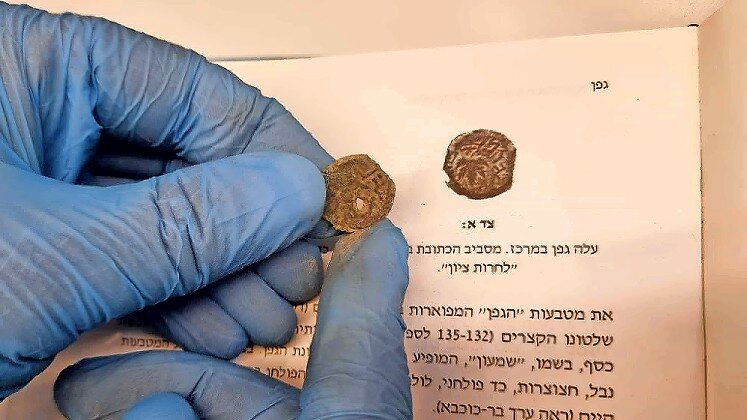Second Temple’s destruction: Jerusalem evidence unearthed
Tangible evidence of the destruction of the Second Temple and the devastating events that unfolded in Jerusalem 2,000 years ago has come to light with the discovery of a rare coin in Jerusalem’s City of David National Park.
The City of David Foundation announced the find as Jews marked Tisha B’Av, commemorating the destruction of the First and Second Temples.
The coin was inscribed with the words, “For the Freedom of Zion,” and was pierced in the middle. Presumably, it was worn as a pendant.
“It seems clear that the coin was pierced on purpose and the hole was not created as a result of natural weathering of the material,” Yaniv David Levy of the Israel Antiquities Authority explained. “The coin is pierced on purpose to probably allow it to be hung.”
Levy added, “These coins had no economic value and it is clear that they were kept as souvenirs.”
He said other archaeological finds have shown that both Jewish families and Roman soldiers kept coins and other objects as mementos from the time of the Jewish Revolt of 66-73 C.E. and the Temple’s destruction.
Levy explained that coins taken by Roman soldiers have been found in excavations of Roman military camps in Europe, but stressed, “In the case of this coin that was discovered in Jerusalem itself, it seems that the possibility that the coin was In the hands of a Jew — more likely.”
Other artifacts discovered in the City of David excavations include a stone weight, a spinning wheel and a basalt grinding bowl, all offering a glimpse into Jewish life in Jerusalem during the Roman siege.
The excavation site, situated next to the “Pilgrims Road,” which served as the main thoroughfare during the Second Temple period, has yielded a treasure trove of artifacts. Among the findings are the remains of collapsed buildings that provide insight into the destruction and turmoil that characterized the final days of Jerusalem.
“There are very few places where you can actually physically touch the ruins of Jerusalem,” said Eli Escusido, director of the Antiquities Authority. “In these days of internal division, we must be awake to the echo that reaches us from the depths of our past, and strive for what we have in common that connects us.”
The announcement came one day after the discovery of another 2,000-year-old silver half-shekel coin in the Judean Desert.

 65.0°,
A Few Clouds
65.0°,
A Few Clouds 




